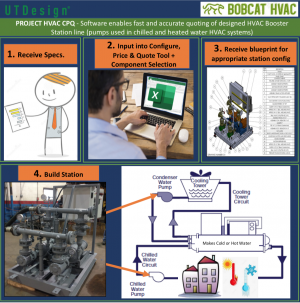Students Present Projects at the Fall 2019 UTDesign EXPO
Senior engineering students at The University of Texas at Dallas presented their Capstone projects at the culmination of their undergraduate career during the Fall 2019 UTDesign EXPO. The UTDesign Engineering EXPO featured student projects that concluded the students’ engineering and project management efforts across two semesters. Projects spanned from biomedical engineering to electrical and computer engineering. The students presented their designs, many of which were created in collaboration with companies that sponsored the projects.
Automated Eyeball Demonstrator
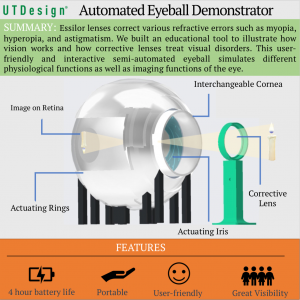
A team of engineering students designed an “Automated Eyeball Demonstrator” for its sponsor, Essilor of America. The model illustrates vision processes and the treatment of visual disorders. Essilor lenses correct various refractive errors in vision, and the model demonstrates the process by which these errors are treated with corrective lenses. The team’s interactive semi-automated eyeball simulates different physiological and imaging functions of the eye. The model boasts a four-hour battery life, portability, user-friendliness and visibility.
Project HVAC CPQ
This team designed “Project HVAC CPQ” software, which enables fast and accurate quoting of a designed HVAC Booster Station line. The software utilizes project specs to input into Configure, Price & Quote Tool and Component Selection to generate a blueprint for appropriate station configuration, which can then be built and incorporated into the HVAC Booster Station line as pumps used in chilled and heated water HVAC systems.
Freshman Studio Test Bench
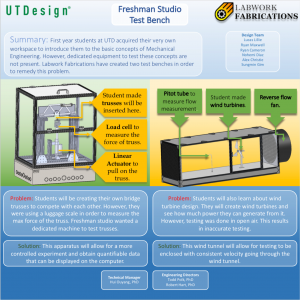
This team designed the “Freshman Studio Test Bench” to provide dedicated equipment for first-year engineering students to be introduced to mechanical engineering concepts. First-year engineering students create their own bridge trusses with luggage scales instead of a dedicated machine. The UTDesign team created a dedicated machine to allow for a more controlled experiment that could obtain quantifiable data. The team also created an enclosed wind tunnel to complement education on wind turbine design, which was previously done in open air.
Ultrasound Aquarium
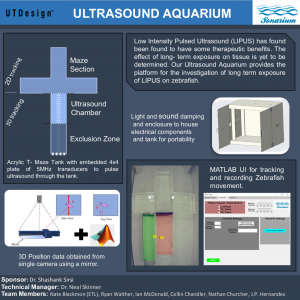
This team designed an “Ultrasound Aquarium” as a platform to investigate low intensity pulsed ultrasound (LIPUS). LIPUS has shown therapeutic benefits; however, there is no research on the effect of its long-term exposure on tissue. The Ultrasound Aquarium allows for investigation of long-term exposure of LIPUS on Zebrafish. The aquarium features an acrylic T-Maze tank with an embedded 4×4 plate of 5MHz transducers to pulse ultrasound through the tank, as well as 2D and 3D tracking, which utilize MATLAB UI to track position data obtained from a single camera using a mirror. The physical components of the aquarium feature a light and sound dampening enclosure to house electrical components and a tank for portability.
Redesigned Reverse Walker
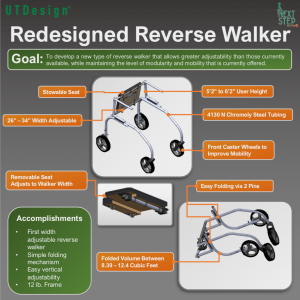
This team designed a “Redesigned Reverse Walker” that allows for greater adjustability than traditional walkers, while maintaining modularity and mobility. The walker design features a stowable seat, adjustable width and height, front caster wheels, and easy folding. The project boasts accomplishments including notoriety as the first width-adjustable reverse walker, as well as its simple folding mechanism, easy vertical adjustability, and 12-pound frame.



